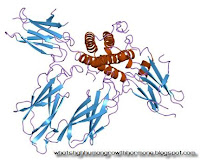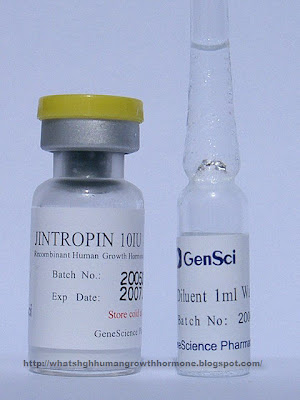For growth hormone deficiency in children (including pituitary dwarfism), when ALL of the following criteria are met:
==>; auxologic evaluation (stature and growth velocity data), including ONE of the following:
- individual’s height is more than two standards of deviation (SD) below average for the population mean height for age and sex, AND a height velocity measured over one year is more than one SD below the mean for chronological age, OR for children over two years of age, there is a decrease in height SD of more than 0.5 over one year.
- individual’s height velocity measured over one year is more than two SD below the mean for age and sex OR more than 1.5 SD below the mean sustained over two years
- growth hormone response of less than 10 ng/mL to at least two provocative stimuli of growth hormone release: Insulin, Levodopa, L-Arginine, Clonidine, Glucagon. One abnormal growth hormone stimulation test is sufficient for children with defined central nervous system (CNS) pathology (e.g., empty sella syndrome, interruption of pituitary stalk, hypoplasia of the pituitary gland, craniofacial developmental defects, pituitary or hypothalamic tumors, etc.);multiple pituitary hormone deficiency (MPHD) (i.e., deficiency of two or more pituitary hormones) or a proven genetic defect affecting the growth hormone axis.
- other pituitary hormone deficiencies, e.g., thyroid, cortisol or sex steroids, have been ruled out and/or corrected prior to time of testing
- for children with either documented panhypopituitarism, defined by the absence of all other anterior pituitary hormones [Luteinizing Hormone(LH), Follicle Stimulating Hormone (FSH), Thyroid Stimulating Hormone (TSH), Adrenocorticotropic Hormone (ACTH)], or a history of cranial irradiation it may be assumed that growth hormone is also absent and no stimulation testing is required.
- Yearly reassessment for re-authorization of coverage is required.
- Coverage for continuation of therapy requires meeting current initial use criteria and evidence of a beneficial response as shown by growth curve chart
- Coverage for growth promotion will cease when the bony epiphyses have closed.
==>Small for Gestational Age (SGA) when ALL of the following criteria are met:
- child was born small for gestational age, defined as birth weight and/or length at least two standard deviations below the mean for gestational age
- child fails to manifest catch-up growth by two years of age, defined as height at least two standard deviations below the mean for age and sex
Coverage for continuation of therapy requires meeting current initial diagnosis criteria only and evidence of a beneficial response as shown by growth curve chart. Coverage for growth promotion will cease when the bony epiphyses have closed.
Note: For consideration for Russell Silver Syndrome or chromosomal anomalies, please refer to end criteria section listing experimental, unproven, investigational indications.
==>For Growth Delay in Children with Chronic Kidney Disease when ALL of the following criteria are met:
- renal function at stage 2 chronic kidney disease (or GFR from 60–89 ml/min/1.73m2)
Yearly reassessment for reauthorization of coverage is required.
Coverage for continuation of therapy requires meeting current initial use criteria and evidence of a beneficial response as shown by growth curve chart. Coverage for growth promotion will cease when the bony epiphyses have closed.
==>For Turner Syndrome, when ALL of the following criteria are met:
- documentation of diagnosis as established by genetic testing
- auxologic evaluation (stature and growth velocity data)
==>For Prader-Willi Syndrome, when ALL of the following criteria are met:
- diagnosis of Prader-Willi Syndrome is confirmed by appropriate genetic testing
- auxologic evaluation (stature and growth velocity data)
==>For Noonan Syndrome, when ALL of the following criteria are met:
- diagnosis of Noonan Syndrome is confirmed by appropriate genetic testing
- auxologic evaluation (stature and growth velocity data)
- diagnosis of SHOX gene deletion is confirmed by appropriate genetic testing
- auxologic evaluation (stature and growth velocity data)
(stature and growth velocity data)
*individual’s height is more than two standards of deviation (SD) below average for the population mean height for age and sex, AND a height velocity measured over one year is more than one SD below the mean for chronological age, OR for children over two years of age, there is a decrease in height SD of more than 0.5 over one year
*individual’s height velocity measured over one year is more than two SD below the mean for age and sex OR more than 1.5 SD below the mean sustained over two years.
Ref:
[2] CIGNA PHARMACY COVERAGE for Humatrope® Nutropin® and Nutropin AQ®







